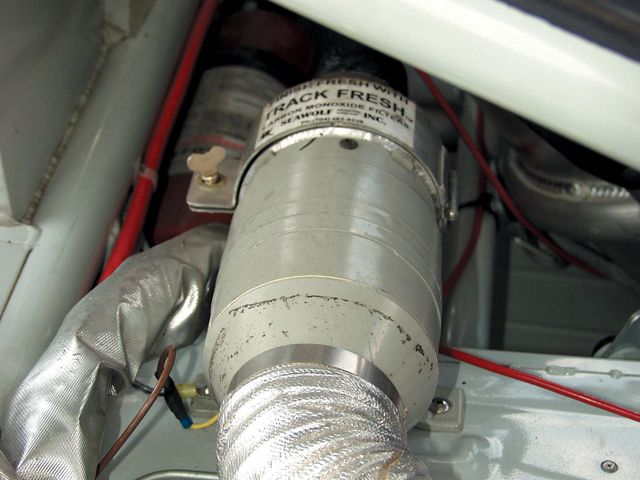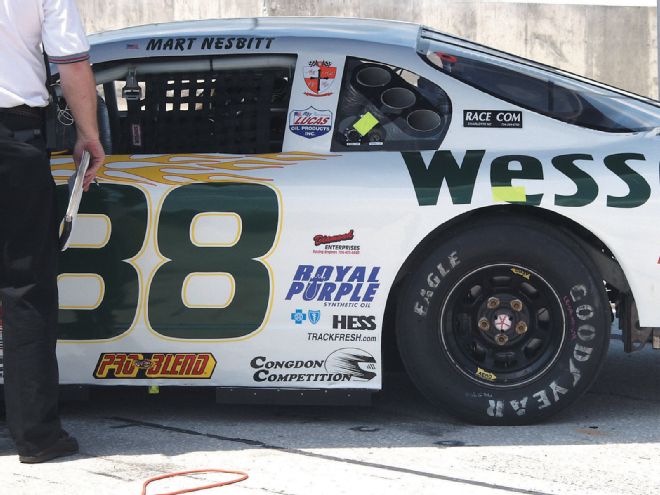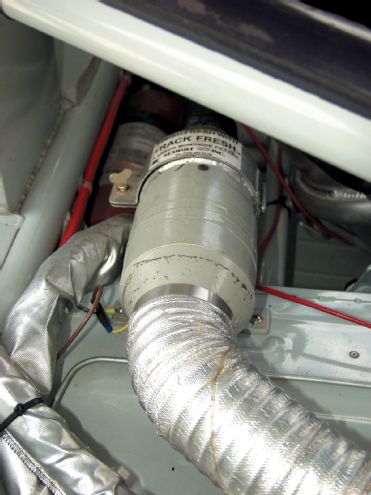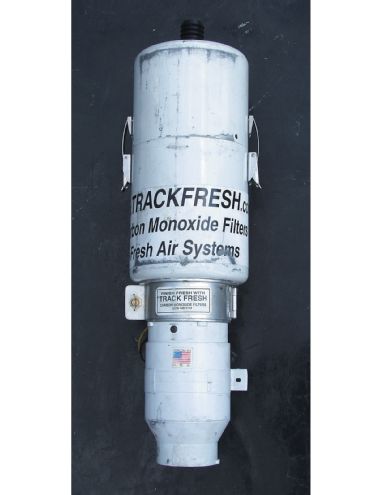
Carbon monoxide (CO) is emitted from gasoline engines. It is an invisible, colorless, odorless, tasteless, poisonous gas produced by the incomplete combustion of fossil fuels. The presence of CO in the circle track racing environment represents one of the most serious threats to the health and well-being of every crew member, especially the driver. Signs of carbon monoxide poisoning include: severe headache, disorientation, agitation, lethargy, stupor, and coma.
 USAR Hooters ProCup driver Mart Nesbitt has been a victim of carbon monoxide. His cars now carry the Track Fresh system.
USAR Hooters ProCup driver Mart Nesbitt has been a victim of carbon monoxide. His cars now carry the Track Fresh system.
If you have ever had a headache or flu-like symptoms after a racing event, you are likely a victim of CO poisoning. The overall effects differ from one individual to another. In extreme cases, drivers have required hospitalization and extended therapy after absorbing high levels of CO.
The CO is absorbed into the blood stream and replaces the oxygen in your system. It acts to prevent the flow of oxygen to your heart, brain, and other vital organs. As the amount of CO in your blood increases, your body becomes starved for oxygen.
 Teams can now use a carbon monoxide (CO) filter/converter that mounts inside the car to reduce the amount of CO inhaled by the driver. It is attached to a 3-inch fresh air inlet hose and an outlet hose that attaches to the helmet. When used properly, this little unit can greatly improve the driver's environment, and helps drivers feel better when the race is over. CO poisoning is a serious health issue in circle track racing.
Teams can now use a carbon monoxide (CO) filter/converter that mounts inside the car to reduce the amount of CO inhaled by the driver. It is attached to a 3-inch fresh air inlet hose and an outlet hose that attaches to the helmet. When used properly, this little unit can greatly improve the driver's environment, and helps drivers feel better when the race is over. CO poisoning is a serious health issue in circle track racing.
Mart Nesbitt, a driver in the Hooters ProCup Series Southern Division, became aware of the effects of CO over two years ago and decided to do something about it. He had regularly developed headaches that lasted for four or five days after a race. He was even hospitalized to help clear out the lingering CO in his system. He warns that the health risks are accumulative and the body retains more and more CO as each week goes by.
There is a company that makes a special type of carbon monoxide filter especially for race cars. Track Fresh is "dedicated to providing the best protection from carbon monoxide poisoning that can occur during a racing event," according to their statement on the company website. The "filter" converts the CO into carbon dioxide, which is a harmless gas. We breathe out carbon dioxide every time we exhale and plants use CO2 to produce oxygen. The conversion is not only good for us, but good for the environment in general.
NASCAR circulated a press release in May, 2003 which stated the sanction, "...has completed a major phase of its 'fresh air' study regarding carbon monoxide and a recommendation has been issued to NASCAR Winston Cup Series, Busch Series and Craftsman Truck Series teams for a catalyst component that can be implemented...." The report goes on to say, "During the study, the experts concluded that the levels of carbon monoxide were not at an alarming level, but we wanted to ensure our drivers of the best possible environment to compete in," said Gary Nelson, director of the NASCAR Research and Development Center.
 The Track Fresh filter is also available with an add-on air cooler (larger cylinder at the top) that holds a frozen air filter, cooling the air that blows into the helmet for up to an hour or more. The CO filter removes and converts up to 95 percent of CO that passes through it as well as other noxious fumes and odors.
The Track Fresh filter is also available with an add-on air cooler (larger cylinder at the top) that holds a frozen air filter, cooling the air that blows into the helmet for up to an hour or more. The CO filter removes and converts up to 95 percent of CO that passes through it as well as other noxious fumes and odors.
Although NASCAR found levels not to be "alarming," the speed at which this organization moved on this issue speaks for itself as to the importance of getting CO levels under control. Every division of stock car racing needs to be aware of the dangers of carbon monoxide poisoning and act accordingly. Nesbitt tells us his filter has made all the difference in the world to him. "Now when I finish a race," he says, "I feel great, with no headaches and no lingering effects." It's time to get your CO levels under control.